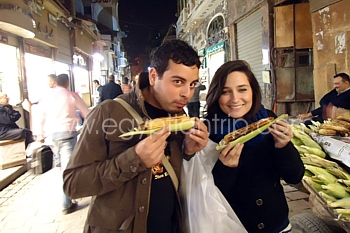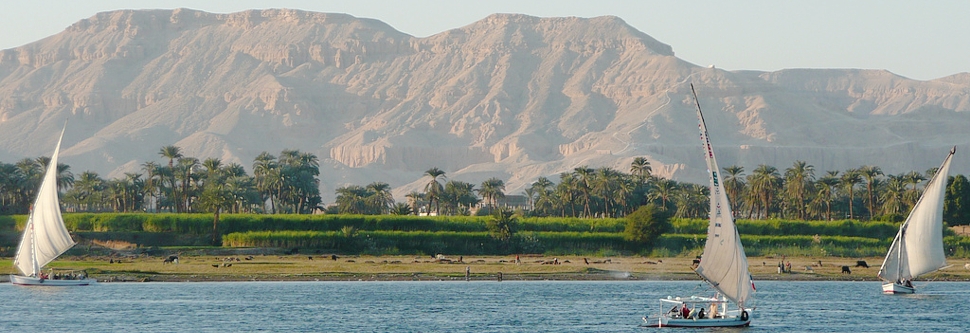The Nile Valley is home to the Valley of the Kings, the iconic Pyramids, the majestic Sphinx and the stunning temples of Luxor and Karnak. Explore the cradle of civilization and sail the world’s longest river. Visit the Nile Valley and marvel at the wonders of the Ancient Egyptians. There is nothing in the world like it.
The Nile is a major north-flowing river in northeastern Africa, generally regarded as the longest river in the world. It is 6,853 km (4,258 miles) long. The Nile is an "international" river as its water resources are shared by eleven countries, namely, Tanzania, Uganda, Rwanda, Burundi, Democratic Republic of the Congo, Kenya, Ethiopia, Eritrea, South Sudan, Sudan and Egypt. In particular, the Nile is the primary water resource and life artery for Egypt and Sudan.
Below the Aswan High Dam, at the northern limit of Lake Nasser, the Nile resumes its historic course.
North of Cairo, the Nile splits into two branches (or distributaries) that feed the Mediterranean: the Rosetta Branch to the west and the Damietta to the east, forming the Nile Delta.
The Nile has two major tributaries, the White Nile and Blue Nile. The White Nile is longer and rises in the Great Lakes region of central Africa, with the most distant source still undetermined but located in either Rwanda or Burundi. It flows north through Tanzania, Lake Victoria, Uganda and South Sudan. The Blue Nile is the source of most of the water and fertile soil. It begins at Lake Tana in Ethiopia at 12°02′09″N 037°15′53″E and flows into Sudan from the southeast. The two rivers meet near the Sudanese capital of Khartoum.
The northern section of the river flows almost entirely through desert, from Sudan into Egypt, a country whose civilization has depended on the river since ancient times. Most of the population and cities of Egypt lie along those parts of the Nile valley north of Aswan, and nearly all the cultural and historical sites of Ancient Egypt are found along riverbanks. The Nile ends in a large delta that empties into the Mediterranean Sea.
 In the ancient Egyptian language, the Nile is called Ḥ'pī or Iteru, meaning "great river", represented by the hieroglyphs shown on the left (literally itrw, and 'waters' determinative).[citation needed] In Coptic, the words piaro (Sahidic) or phiaro (Bohairic) meaning "the river" (lit. p(h).iar-o "the.canal-great") come from the same ancient name. In the ancient Egyptian language, the Nile is called Ḥ'pī or Iteru, meaning "great river", represented by the hieroglyphs shown on the left (literally itrw, and 'waters' determinative).[citation needed] In Coptic, the words piaro (Sahidic) or phiaro (Bohairic) meaning "the river" (lit. p(h).iar-o "the.canal-great") come from the same ancient name.
Nile cities include Khartoum, Aswan, Luxor (Thebes), and the Giza – Cairo conurbation. The first cataract, the closest to the mouth of the river, is at Aswan, north of the Aswan Dam. This part of the river is a regular tourist route, with cruise ships and traditional wooden sailing boats known as feluccas. Many cruise ships ply the route between Luxor and Aswan, stopping at Edfu and Kom Ombo along the way. Security concerns have limited cruising on the northernmost portion for many years.
|



|
